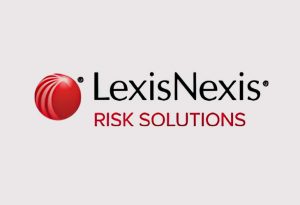ATLANTA — The amount of retail fraud, and its cost, has risen significantly over the past year, according to the 12th annual LexisNexis Risk Solutions 2021 True Cost of Fraud Study.
 This year’s findings were established through a survey conducted in March and April 2021 and show that the cost and volume of fraud has risen significantly since last year’s survey and compared to a separate pre-pandemic report.
This year’s findings were established through a survey conducted in March and April 2021 and show that the cost and volume of fraud has risen significantly since last year’s survey and compared to a separate pre-pandemic report.
The LexisNexis Fraud Multiplier projects that every $1 of fraud costs U.S. retail and ecommerce merchants $3.60 compared to $3.13 prior to the pandemic. This is a 15% increase from a pre-pandemic survey and a 7.1% increase since the 2020 survey conducted during the pandemic. The cost of fraud in Canada is up 5.2% since 2020, now at $3.02. The mobile channel plays a key role in this increase in both countries, as more consumers turned to their devices to shop during the pandemic.
The pandemic changed consumer behaviors and fraudsters followed, taking advantage of merchants that accelerated mobile channel strategies. Respondents indicate there has been increased use of mobile apps and contactless payment methods at the expense of mobile browsers. This change in behavior comes with a fraud cost shift from browsers to these alternative methods.
Key Findings and Trends from the Report
- Fraud Volumes Soar: The overall volume of fraud attacks has grown beyond pre and early pandemic periods, with businesses offering online/mobile transactions experiencing the largest year-over-year increase. U.S. ecommerce merchants have been hit particularly hard with merchants reporting a 140% increase in attacks since 2020 and their counterparts in Canada reporting a 52% increase. Successful attacks rose 52% and 45% in those markets respectively.
- Struggles with Identity Verification: Identity verification remains a top challenge for merchants and represents a larger share of fraud losses compared to previous years. A recent LexisNexis Cybercrime Report revealed that synthetic identities and other account-related fraud frequently match to breached digital identity data such as email addresses and phone numbers. Merchants struggle to verify digital identity data and balance fraud detection with an exceptional customer experience. To that end, there is limited merchant use of solutions designed to support both issues.
- Implementing Fraud Mitigation Tools: U.S. retailers tend to use more fraud solutions than Canadian retailers. This includes passive/digital identity-based solutions that are effective at detecting sophisticated fraud while normalizing customer friction. The average U.S. retailer uses eight fraud prevention solutions while the average Canadian retailer only uses five. Use is more limited among ecommerce merchants in both countries, which weakens their fraud detection and prevention efforts.
- Quality Counts: Merchants that are serious about optimizing fraud detection while minimizing customer friction use multi-layered solutions across different customer touchpoints. This includes solutions that verify physical identity attributes, digital identity attributes and transaction risk. Merchants who invest in best-practice, multi layered solutions that are integrated with cybersecurity and digital experience operations experience a 71% lower volume of successful fraud attacks and a 12% lower cost of fraud.
“Retailers should anticipate and prepare for increased fraud in the foreseeable future, even as we see a light at the end of the global pandemic tunnel,” said Kimberly White, senior director, fraud and identity, LexisNexis® Risk Solutions. “We should all assume that the accelerated movement to online/mobile transactions and payments spurred by the pandemic will continue as the preferred method for transacting. This means businesses must continue to build out and enhance the digital customer experience while protecting themselves against fraud.
“Organizations can no longer rely on manual processes and thin technologies to minimize fraud and reduce challenge rates, manual reviews and costs,” White continued. “A solid solution includes implementing a robust fraud and security technology platform, which allows businesses to adapt to the changing digital environment while realizing strong fraud management and a risk-appropriate friction experience for genuine customers. Merchants should therefore take a multi-layered solution approach involving digital and transaction risk mitigation solutions that integrate with cybersecurity and digital customer experience operations.”




You must be logged in to post a comment Login